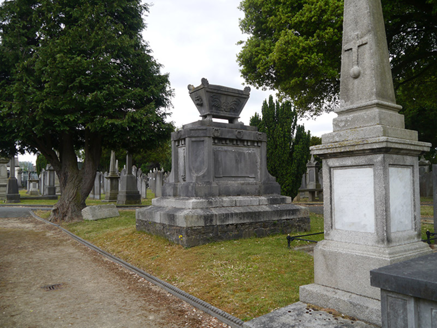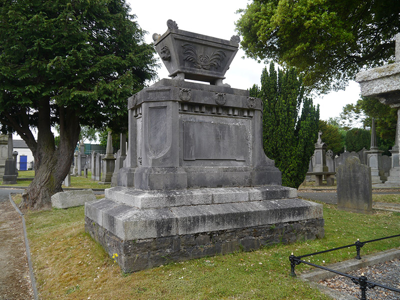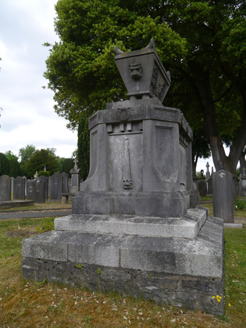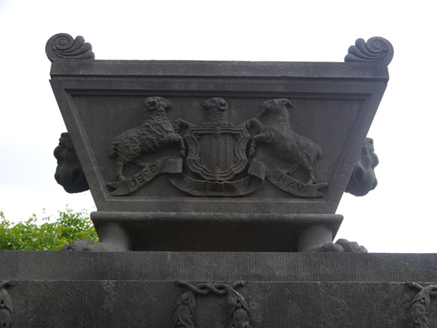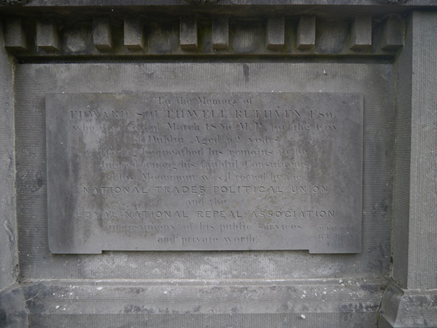Survey Data
Reg No
50130103
Rating
Regional
Categories of Special Interest
Architectural, Artistic, Historical, Social
Original Use
Grave monument
In Use As
Grave monument
Date
1835 - 1840
Coordinates
315031, 236907
Date Recorded
12/06/2018
Date Updated
--/--/--
Description
Freestanding neo-Classical limestone funerary monument, erected c. 1836. Stepped rectangular granite base with chamfered limestone coping over random rubble foundation. Limestone sarcophagus having projecting swept panelled corner piers, moulded plinth and dentils, laurel wreaths to coping, recessed east and west ends having carved inverted torches, and other sides have raised inscribed plaques. Monument topped by limestone casket on clawed feet, panelled to north and south sides, carved coat of arms with rampant goat and ram (Deed/Shaw) to south side and palm leaves and ribbon to north, bull's heads to east and west faces, and scrolls to corners of lid.
Appraisal
A substantial neo-Classical funerary monument comprising a sarcophagus and casket, erected in memory of Edward Southwell Ruthven (1772-1836). Southwell-Ruthven was an Irish Repealer politician and supporter of Daniel O'Connell. He was MP for Downpatrick in 1806-7 and subsequently for Dublin City with O’Connell in 1832-5, elected again in January 1835 but unseated on petition in April of the same year. O'Connell laid the foundation stone for the monument, which was erected to his memory by the National Trades Political Union and the Loyal National Repeal Association. The designer is not recorded, although the monument was executed by Michael Kirwan of Dublin (signature). The monument is heavy with symbolism and is distinguished by high-quality craftsmanship. Originally known as Prospect Cemetery, this burial ground was opened in 1832 following a successful campaign by Daniel O'Connell to establish a civic, non-denominational cemetery. It holds the graves and memorials of over one million people, including many notable citizens. Prominently located close to the east (original) entrance, the monument is one of a cluster of architecturally notable memorials in this early part of the cemetery, which was known as Curran Square, offering premium plots that reflected the status and social standing of those interred there during the early decades of the cemetery's operation. The monument makes a strong contribution to the architectural and stylistic variety of the Cemetery.
